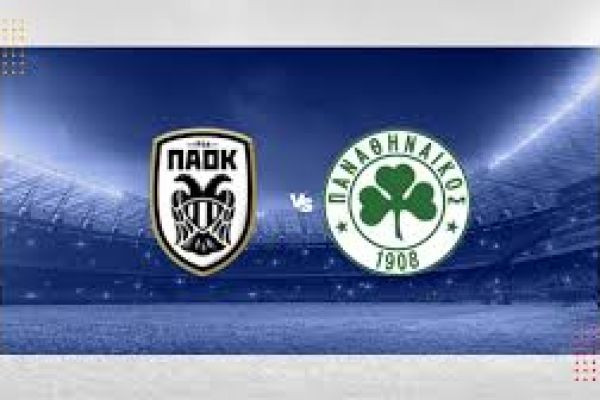The fixture between Panathinaikos FC (PAO) and PAOK FC transcends a simple league match; it is a battle for regional supremacy, political influence, and often, the right to challenge the dominance of Olympiacos. This clash, often brutal and always passionate, is defined by immense strategic tension, pitting PAO’s disciplined technical structure against PAOK’s fierce, high-energy counter-pressing and physicality.
Panathinaikos FC: Structured Possession and Wide Aggression
Panathinaikos, operating out of Athens, carries the traditional weight of a Greek football giant. Their tactical identity under modern management tends to be possession-oriented, striving for control and methodical build-up, often utilizing a dynamic $4-3-3$ or $4-2-3-1$ formation.
PAO’s Strategic Pillars:
Midfield Supremacy: The core strength lies in their central midfield, which is designed for technical proficiency, quick one-touch passing, and tempo control. The central pivot is crucial for linking the defense to the attack and ensuring rapid ball recovery if possession is lost.
Inverted Wingers and Attacking Full-Backs: PAO seeks to create overloads on the flanks. They often use inverted wingers who cut inside to shoot or combine with the central striker, allowing the full-backs to push high and provide the necessary width and crossing service.
Aggressive Pressing: When they lose the ball, PAO attempts to win it back high up the pitch, utilizing a coordinated counter-press to pin the opponent deep in their half and generate chances from forced errors, especially against a team like PAOK that relies on fast vertical breaks.
Targeting the Half-Spaces: Their technical attackers aim to operate in the narrow channels between PAOK's full-backs and center-backs, exploiting the momentary lack of coordination in the defensive line.
PAO’s primary vulnerability is that their structured possession can sometimes become predictable and slow, particularly if PAOK successfully suffocates the central passing lanes, forcing PAO into harmless wide areas.
PAOK FC: Physicality, Intensity, and Verticality
PAOK, based in Thessaloniki, embodies the passionate, rebellious spirit of Northern Greece. Their tactical blueprint is built on tenacity, relentless running, and maximizing the atmospheric advantage of the Toumba Stadium. They also favor a fluid $4-2-3-1$ but prioritize verticality over lengthy possession.
PAOK’s Strategic Mandate:
Defensive Discipline and Counter-Press: PAOK’s defense is aggressive and organized. The two central holding midfielders are crucial, tasked with shielding the back four, winning physical duels, and disrupting PAO's midfield rhythm. Their counter-press is designed to be chaotic and intense, aiming to force long balls or misplaced passes.
Wing Speed in Transition: Upon winning the ball, PAOK’s transition is rapid and direct. Their wingers are fast, relying on straight-line speed to exploit the space left by PAO’s advanced full-backs, turning defense into attack within a few seconds.
Striker as Focal Point: The center-forward (often a target man) is tasked with holding up the ball under pressure and linking play to the oncoming attacking midfielders and wingers, providing the crucial pause needed for the team to transition from defense to offense.
Set-Piece Threat: Given the sheer atmosphere and the physicality of their squad, corners and wide free-kicks are viewed as major scoring opportunities against a PAO defense under siege.
PAOK’s main challenge is maintaining discipline. The aggressive nature of their play and the emotion of the derby often lead to yellow and red cards, which can severely compromise their tactical plan.
Key Decisive Tactical Conflicts
The match will pivot on three critical areas that will determine which side successfully imposes its will:
The Midfield Collision: This is the most important battle. Can Panathinaikos’s technical midfielders (e.g., Pérez or an equivalent playmaker) withstand the fierce, relentless physicality and pressure applied by PAOK’s engine room? If PAOK disrupts PAO’s pivot, PAO's attack will become disjointed.
PAO’s Full-Back Overlap vs. PAOK’s Transition: When PAO's full-backs commit forward to attack, they create the chances, but they also expose massive space. PAOK will relentlessly target this gap with fast, diagonal balls. The success of PAOK’s counter will determine if PAO’s full-backs are forced to play cautiously.
The Pressure Cooker: Both teams rely heavily on their home support. However, in this derby, the team that manages the pressure better in the opening $20$ minutes—avoiding early bookings and minimizing errors—often gains the psychological edge needed to dictate the emotional flow of the game.
Cultural Context and Prediction
This fixture is a true Greek Derby, pitting the two major cities against each other. The rivalry is intense, often involving political and social undertones. Toumba and Leoforos Stadiums are two of the most volatile arenas in European football, providing a hostile backdrop that makes players' nerves a critical factor.
Expect an emotionally charged, high-intensity, and likely low-scoring affair. Both teams will trade periods of dominance, with PAO likely controlling possession and PAOK executing sharp, dangerous counters. The sheer tension usually limits free-flowing football, meaning a moment of individual brilliance or a decisive set-piece will likely separate the sides.
A narrow $1-0$ or $1-1$ result is the most probable outcome, reflecting the tight margins and aggressive defensive efforts of both Greek heavyweights.








